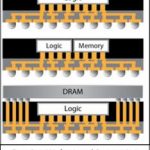Coming up is the 23rd annual TSMC Technology Symposium where you can get first-hand updates on advanced and specialty technologies, advanced backend capabilities, future development plans, and network with hundreds of TSMC’s customers and partners. This year the Silicon Valley event kicks off at the Santa Clara Convention Center. For more information the Symposium landing page is HERE but first lets talk about design platforms.
The semiconductor design ecosystem, semiconductor companies, and TSMC are uniting around new methods to overcome chip design challenges by integrating the right tools and technologies into customized, powerful design platforms.
It is becoming apparent that the next growth driver for the IC industry is “ubiquitous computing” where data is generated, collected, filtered, processed and analyzed not just in the cloud or network, but also locally in smart devices all around us. To help its customers seize these opportunities, TSMC and its Open Innovation Platform® partners have developed four application-specific platforms for the next generation of high-growth applications: Mobile, High-Performance Computing (HPC), Automotive, and Internet of Things.
Smartphones occupied much of the last decade’s engineering resources and continue to grow at a healthy clip – Gartner reports 1.5 billion units sold in 2016 – pushing advanced semiconductor technology and design to new heights. However, it is now clear that mobile was just the beginning of a new silicon revolution as industry focus rapidly shifts to the optimization of advanced technology for automotive, HPC and IoT.
In mobile, growth in silicon content per device is driven by features such as dual camera, fingerprint sensors, AR/VR and migration to 4G, 4G+ and 5G. For HPC, artificial intelligence and deep learning will have significant impacts on many industries including healthcare, media and consumer electronics. On the automotive front, ADAS, night-vision, and smart energy for hybrid and electric vehicles promise to make driving more convenient, safe and green. Finally, IoT opens up a multitude of opportunities for ICs that will transform the way we live and improve how societies can be organized and managed through improved efficiency and pervasive communication.
Dr. Cliff Hou, TSMC Vice President of Research & Development, Design and Technology Platform, has pioneered the evolution of design ecosystems to design platforms and the application-specific design enablement that addresses distinct product requirements of each of these four segments. Dr. Hou asserts that application-specific design platforms deliver greatly enhanced solutions that simplify highly complex design activity, reducing the time and effort needed to bring products to market for these high-growth opportunities.
Each TSMC process and packaging optimized design platform includes reference subsystem designs to facilitate innovation; processor cores (CPU, GPU); standard interfaces, Analog/Mixed Signal IP; foundation IP that includes standard cells, SRAM and I/O; design flow, design guideline and EDA tools; and PDK and Tech Files. The goals and readiness of each platform is summarized below:
If you were lucky enough to get a golden ticket to this event it would be a pleasure to meet you. SemiWiki bloggers Tom Dillinger, Tom Simon, and myself will be there blogging live and I will be giving away signed copies of our book on The History of ARM “Mobile Unleashed” in the Solido booth during the lunch break. If you would like to do a meet and greet and get a free book stop on by and say hello.
About TSMC
TSMC created the semiconductor Dedicated IC Foundry business model when it was founded in 1987. TSMC served about 470 customers and manufactured more than 8,900 products for various applications covering a variety of computer, communications and consumer electronics market segments. Total capacity of the manufacturing facilities managed by TSMC, including subsidiaries and joint ventures, reached above 9 million 12-inch equivalent wafers in 2015. TSMC operates three advanced 12-inch wafer GIGAFAB™ facilities (fab 12, 14 and 15), four eight-inch wafer fabs (fab 3, 5, 6, and 8), one six-inch wafer fab (fab 2) and two backend fabs (advanced backend fab 1 and 2). TSMC also manages two eight-inch fabs at wholly owned subsidiaries: WaferTech in the United States and TSMC China Company Limited, In addition, TSMC obtains 8-inch wafer capacity from other companies in which the Company has an equity interest.
TSMC’s 2015 total sales revenue reached a new high at US$26.61 billion. TSMC is headquartered in the Hsinchu Science Park, Taiwan, and has account management and engineering service offices in China, Europe, India, Japan, North America, and, South Korea.



